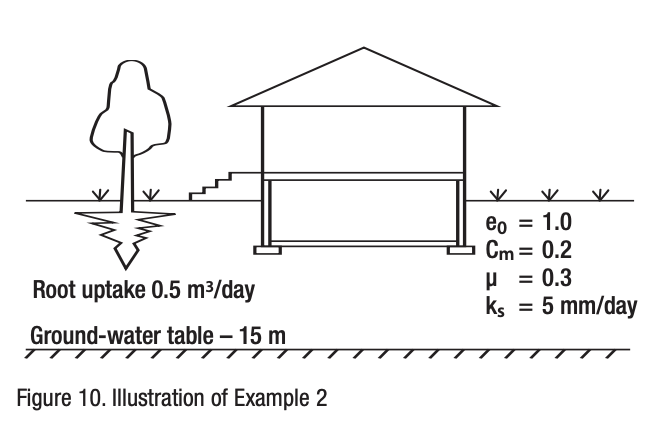Matric suction is the pressure dry soil exerts on the surrounding soils to equalise the moisture content in the overall block of soil.
Matric suction conditions in the soil profile were obtained through steady-state unsaturated seepage analyses.
The initial matric suction profile is the same as suction varied from 409 kPa at tree root to 49 kPa at the lower boundary of the soil domain.
The contours of changes in matric suction are presented in Fig. 11. The closer to the tree, the more change in suction is observed. The results of the stress-deformation analysis are shown in Fig 14 as contours of vertical displacement.
A maximum foundation settlement of 80mm and a minimum settlement of 25 mm was observed. A maximum settlement in the soil profile took place at tree location and decrease with horizontal distance and depth.


Includes Extracts of Proceedings of Geo-institute Shallow Foundations and Soil Properties Committee sessions at the ASCE 2001 Civil Engineering Conference. (2001). Expansive Clay Soils and Vegetative Influence on Shallow Foundations (pp. 36 – 37). Houston: American Society of Civil Engineers.
Root Barrier is locally produced to suit Australian conditions, stock is on hand and available.
Good service, good prices, sound advice and a happy disposition make work an enjoyable place to be.
How Do We Minimise the Shrinkage of Reactive Clay?
By placing a 1.5 to 2-metre root proof and the waterproof wall around the structure that we wish to protect. This will create an island effect and keep the change in moisture content to a minimum.
The root barrier will effectively disconnect the tree from the moisture under the slab. ROOT BARRIER is a flexible waterproof cutoff wall that will achieve both goals of stabilising the clay and keeping the tree roots away.